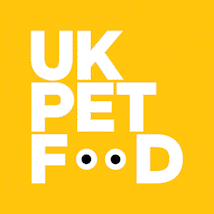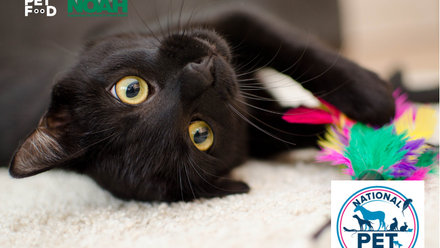PFMA's Tip Top Research Details Top Ten Pets
The latest findings are based on interviews with over 8000 UK households and confirm that 11 million households own a pet[i]. Looking at the data since 2011, this represents an average increase of 1% per year. There are around 57m pets in the UK and the top ten most popular are:
Top Ten Pets
15-20 million fish kept in tanks
20 million fish kept in ponds
8.5 million dogs
7.5 million cats
800,000 rabbits
600,000 domestic fowl
700,000 guinea Pigs
600,000 caged birds
400,000 hamsters
300,000 lizards
Whilst nearly half of UK households have a pet this leaves many without (16.8million). PFMA investigated this further and discovered that 95% of these households are actually open to pet ownership as only 5% specifically stated they did not want one. Various reasons were given for not owning a pet and lifestyle factors were the predominant.
Top Five Reasons for no Pets
Lifestyle / Work / Time (36%)
Moved into rented accommodation (13%)
Don’t want a pet / not a pet person (5%)
Costs (4%)
Didn’t realise what was involved (4%)
Michael Bellingham PFMA Chief Executive concludes: “Pet ownership is a rewarding experience for everyone in the family. With numerous scientifically proven emotional and physical benefits, we would love to increase the possibility of more families benefitting from caring for a pet. With the pet industry welcoming many more companies offering pet care, dog walking, cat feeding services, sophisticated feeders and toys, where there is a will there is often a way! It’s also true that many families have discovered the pleasure of owning smaller pets such as birds or hamsters, where space or work does not allow for a larger pet.”
Regional Differences
The pet populations vary greatly according to geographical location. With ‘lifestyle’ the most significant barrier to ownership, it is not surprising to see that London has the lowest pet populations: 9% have dogs, 12% have cats, 1% rabbits, 5% indoor fish, 2% outdoor fish and 1% indoor birds. These compare to the national average of 26% owning dogs, 17% cats, 2% rabbits, 9% indoor fish, 5% outdoor fish and 1% indoor birds.
High populations of pets are found in regions where lifestyle traditionally lends itself more to pet ownership. Northern Ireland, the North East and Wales boast the highest dog populations (44%, 31% and 31% of households respectively). The most popular cat areas are South West (21%) and East of England, South East and Wales (20%). The hottest spot for rabbits is the North East (4%), outdoor fish in the South East (9%) and South West (7%), indoor fish Wales (12%), North East (11%) and West Midlands (10%).
Data expert, Ben Dummer of Soulor Consulting concludes: “Usually market research respondents will over-emphasise the relevance of costs in their responses. This is interesting data with the cost of ownership precluding only 4% of potential owners. This further emphasises the value in investigating lifestyle barriers further. Generally speaking, lifestyle factors are moveable and evolve with time, allowing for potential movement in these figures.”
For more information on PFMA’s annual data, regional trends and market data please see www.pfma.org.uk/statistics.
[i] Each year a representative sample of UK adults are interviewed, in face-to-face interviews, regarding their pet ownership. Since 2014, a sample of over 4,000 people have been interviewed. In order to further reduce statistical uncertainty, survey results are averaged over 2 years, giving an effective sample of over 8,000 people.






